Here’s a list of flower names that begin with the letter A with an emphasis on common and easy-to-grow types:
Aconitum

Aconitum (the Latin name for Aconite) is a genus of over 250 species belonging to the Aconitum Napellus, Aconitum Carmichaelii, and Aconitum Uncinatum families.
Aconite is commonly known as Monkshood or Wolfsbane, but these names may refer to any of the approximately 250 Aconitum species.
The Aconitum genus of plants are tall perennial wildflowers mostly found in temperate regions of Asia, Europe, and North America.
Aconite species are highly toxic due to their high content of Aconitine alkaloids.
African Daisy
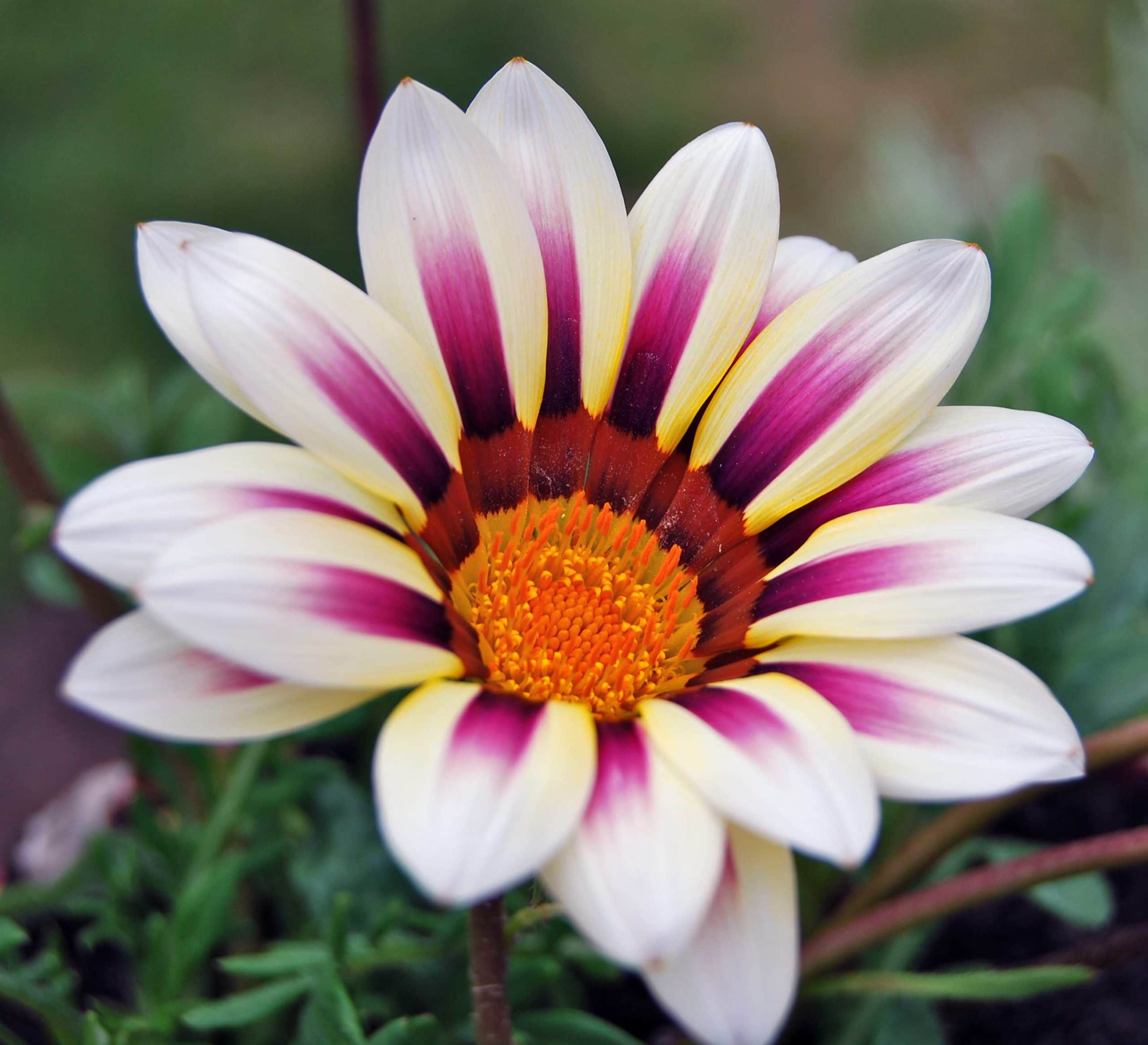
The African daisy is an African plant native and annual flowering plant in the Gazania genus.
This particular species of African Daisy was introduced to the U.S. in the early 1900s and is known for its lovely white flowers with purple centers. African Daisies also feature frail lance leaves that are typically silvery gray.
African daisies prefer full sun to partial shade and well-drained soil but will blossom in as short as two months after planting.
African Daisies can be susceptible to root rot if grown in overly moist conditions. They do not typically need to be fertilized since they are naturally adapted to poor soils.
Agapanthus
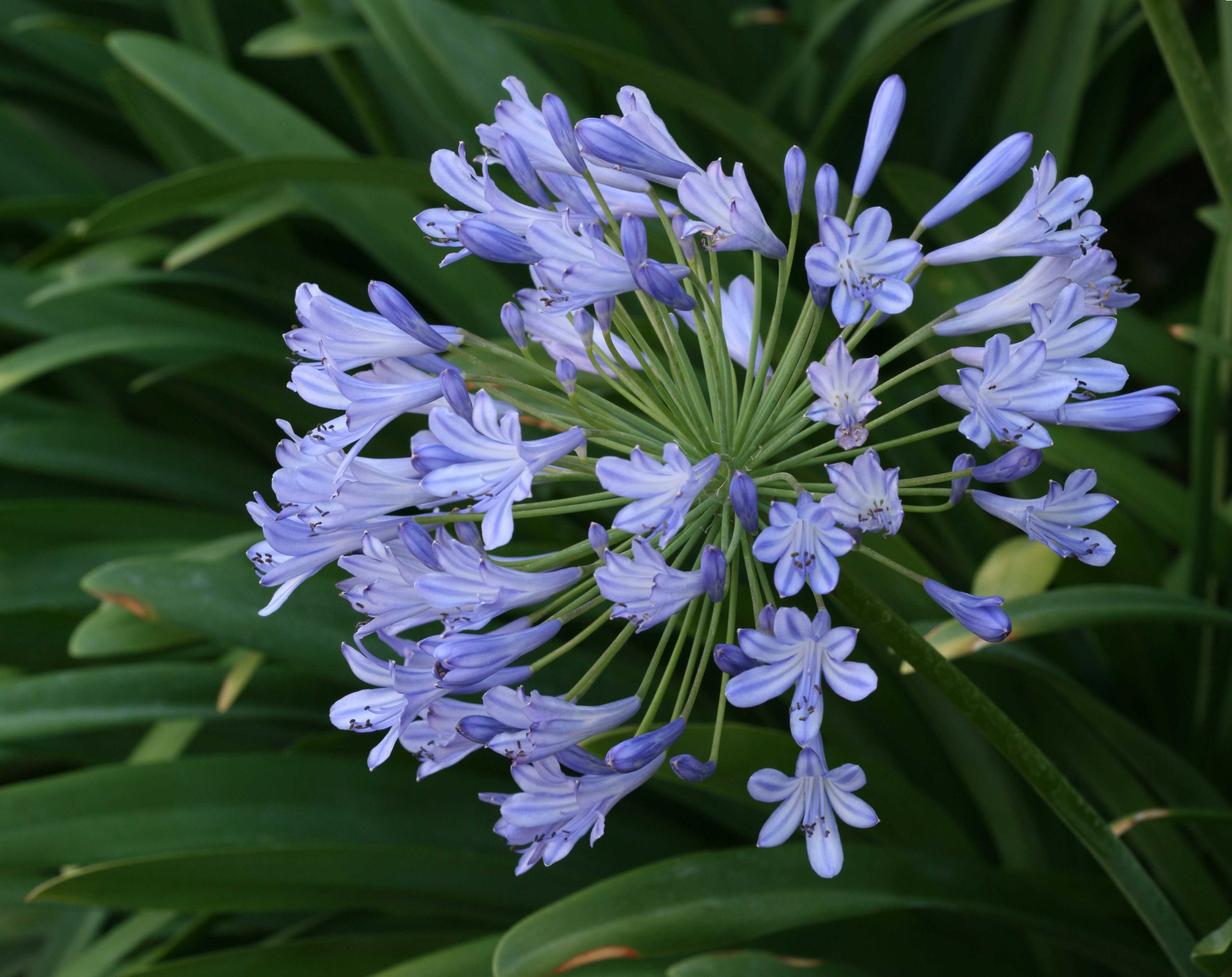
Agapanthus is a sun-loving perennial plant, grown for its subtle colors and unique flower shape.
Other flower names applied to Agapanthus include the Star of Bethlehem and Lily of the Nile.
Most Agapanthus thrives in full sun and requires about 6-8 hours of sun per day.
Ageratum Houstonianum
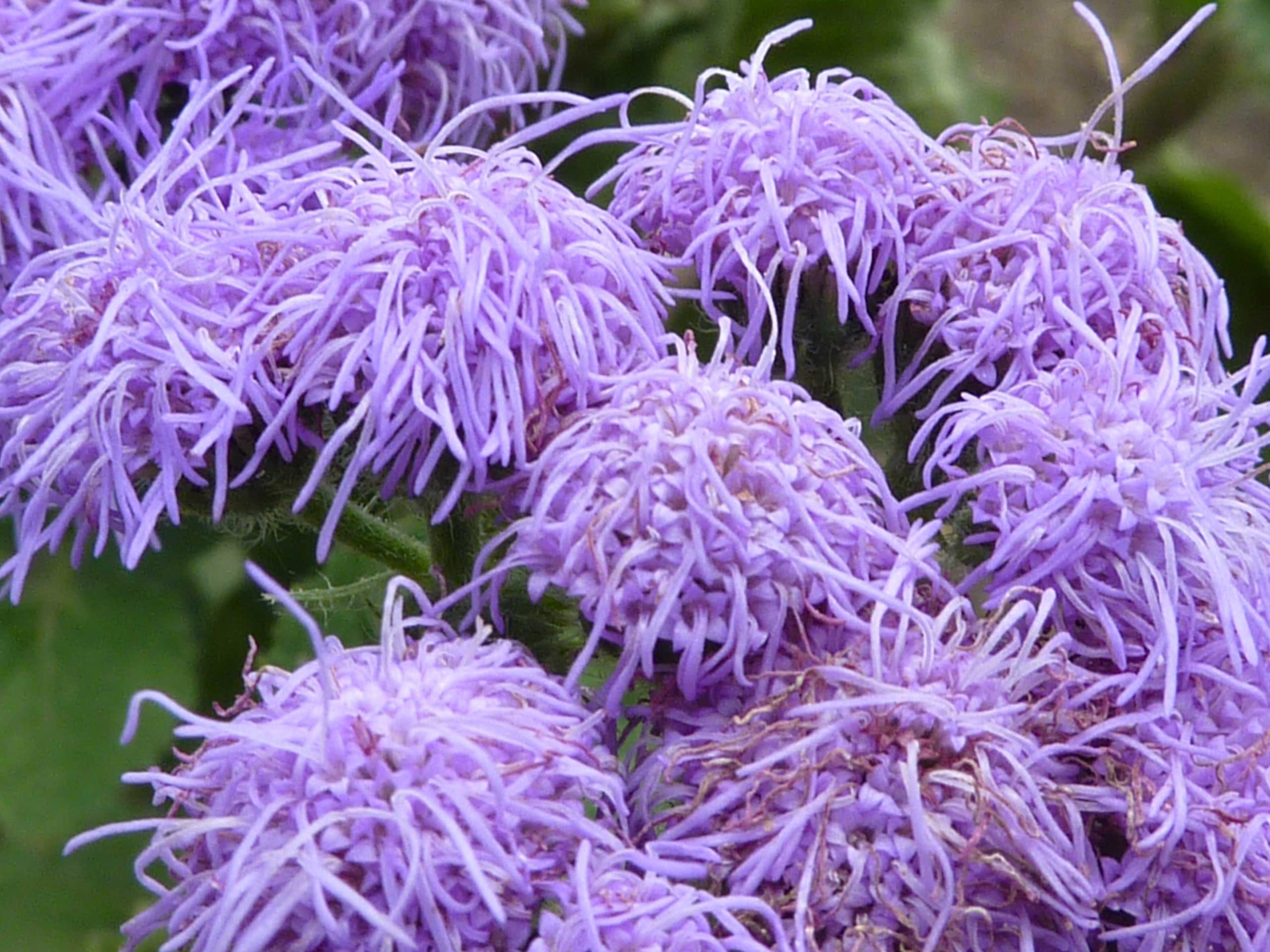
The Ageratum, also called Floss Flower, is well-known and widely grown in temperate regions.
Ageratum belongs to the family Compositae (Asteraceae), which is commonly known as the Daisy family.
Ageratum is considered an annual, meaning it only flowers for one season, but many cultivars of Ageratum are perennial.
Ageratum flowers are comprised of many disk florets surrounded by two series of small ray florets. They come in different colors, mostly blue or white with some cultivars that have both.
Ageratum is often considered an ornamental plant used for borders, beds, and containers. Ageratum prefers full sun or partial shade and is drought tolerant, but can adapt easily to various soil types.
Ageratum mostly likes well-drained slightly acidic soils with pH of 6 to 7.
Alchemilla
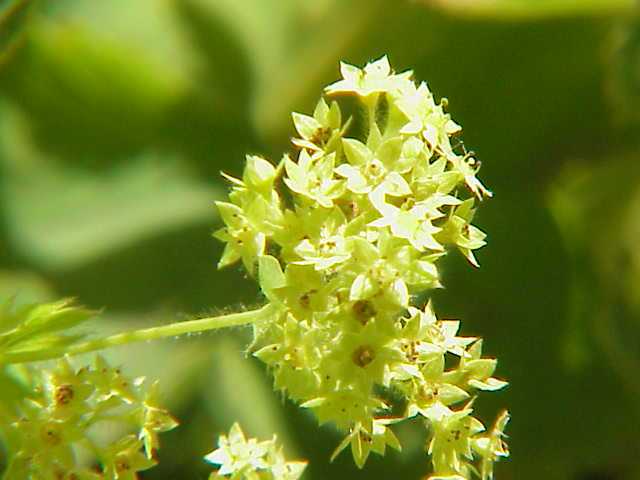
Alchemilla, commonly known as Lady’s Mantle, is a herbaceous perennial plant in the rose family.
It is native to Europe, northern Asia, and northwestern Africa, but can be found in North America as an introduced species and often a noxious weed.
The Alchemilla has simple leaves arranged alternately on erect stems rising directly from the creeping rootstock.
The leaves are 5–20 centimeters long with finely serrated margins.
Alchemilla grows commonly throughout suburban habitats where it can become quite weedy despite its prostrate growth habit (e.g. its presence is often difficult to eliminate in lawns, sidewalks, parking lot areas, etc.).
Allium Roseum
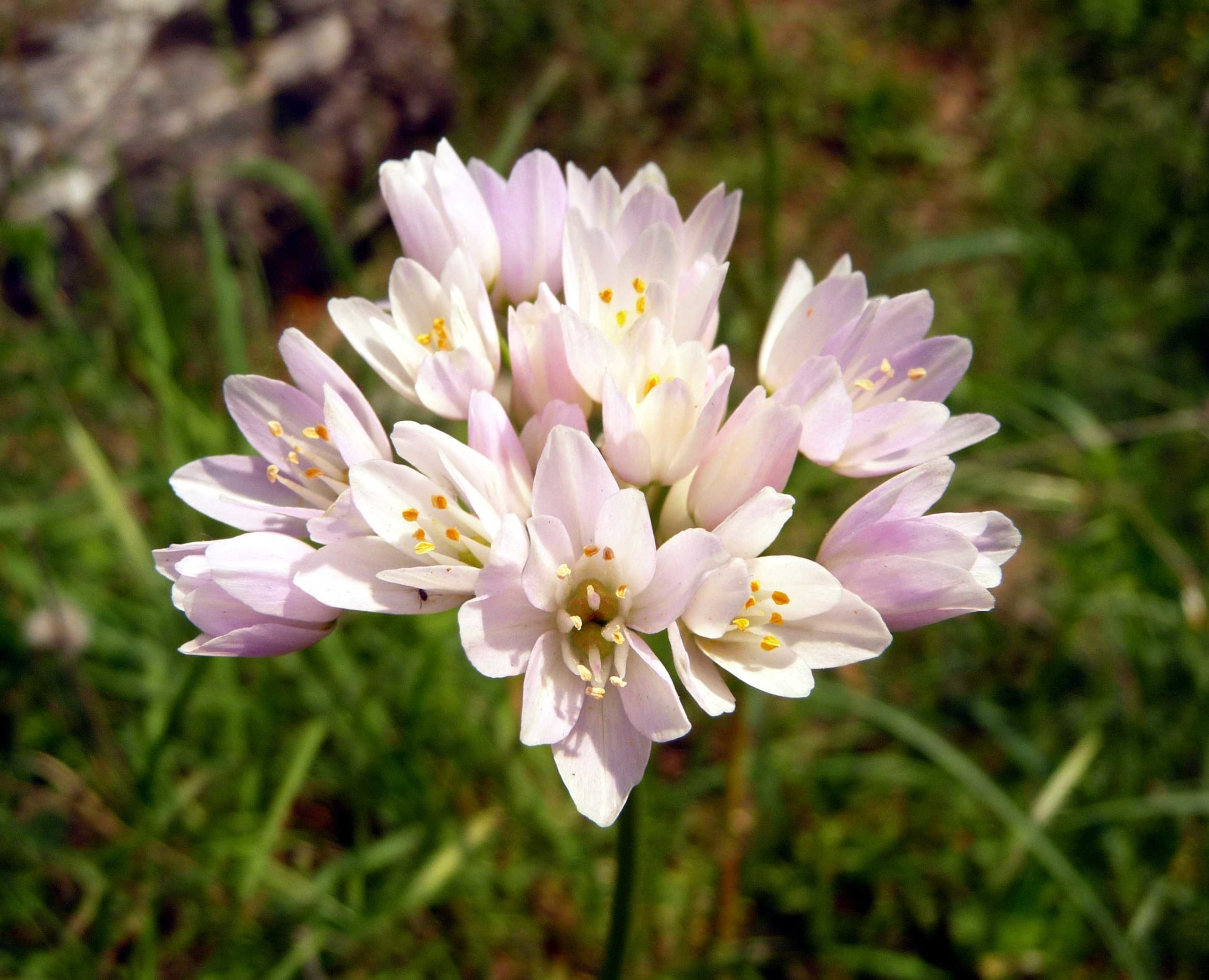
Allium Roseum, commonly known as Rosy Garlic, is a perennial plant that grows from a bulb made of fused cloves.
Both the flowers and leaves of Allium Roseum are edible, and they have a mild garlic flavor. Due to its strong scent, Rosy Garlic repels pests like deer and rabbits, which makes it great for companion planting.
Allium Rosseum typically blooms in late spring to early summer. While in bloom, the flower head has a spherical umbel of purplish-pink flowers which open one by one over two days and the plant is typically 14-16 inches tall.
All Alliums require well-drained soil in full sun for thriving.
Alstroemeria
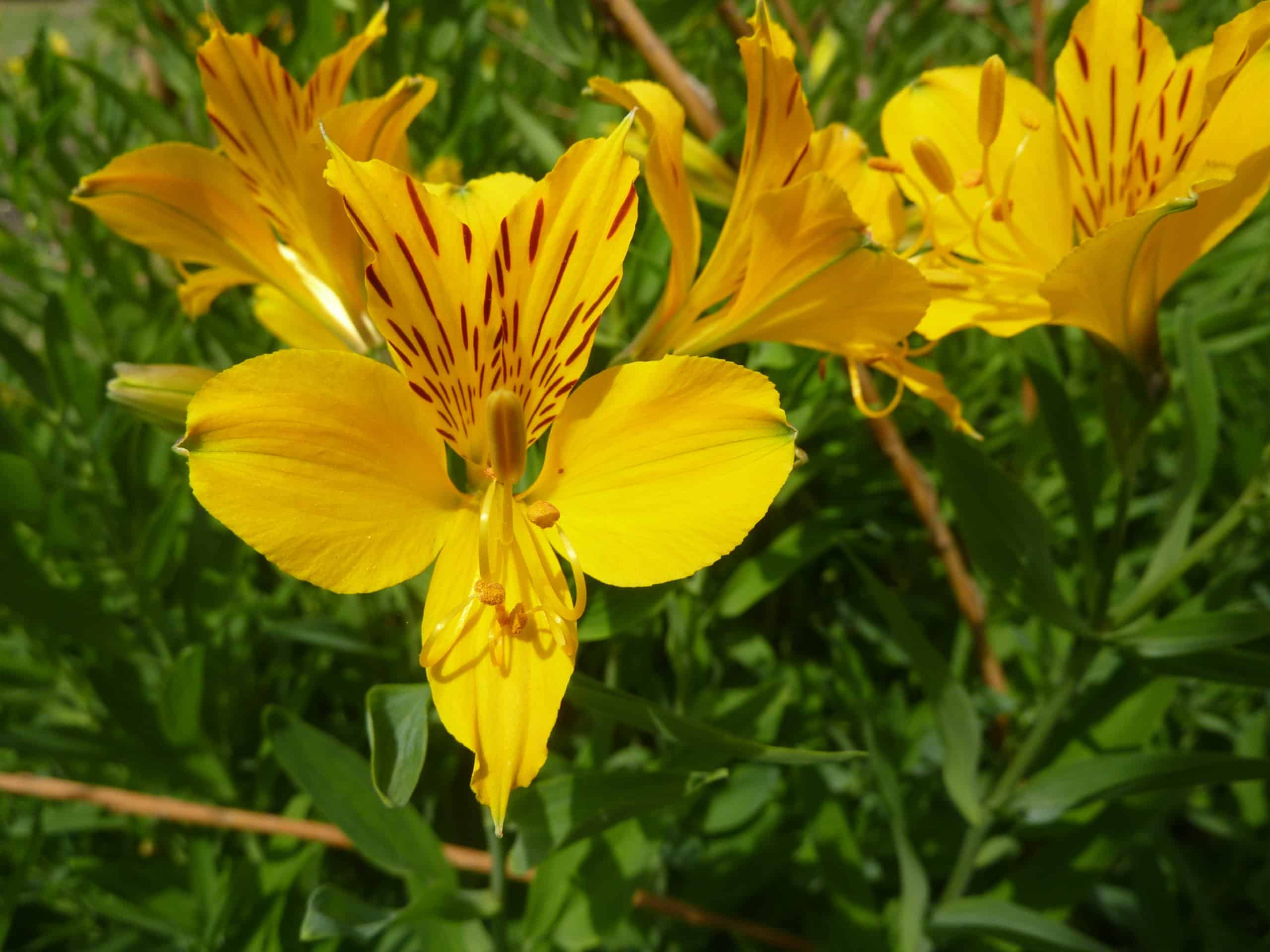
Alstroemeria, commonly called the Peruvian Lily, is a perennial flowering plant native to South America belonging to the Alstroemeriaceae family. Despite the name, it’s not a true lily and is more closely related to hyacinths.
Typically growing 4-16 inches tall, Alstroemeria produces large, symmetrical flowers in a variety of colors atop slender stems with alternate leaves forming a dense basal rosette.
This versatile flower can be grown from seed and thrives outdoors in cool climates. It can also be grown indoors for earlier blooms using a forcing technique.
Alstroemeria is known for its long-lasting blooms, making it a popular choice for cut flowers.
Alyssum
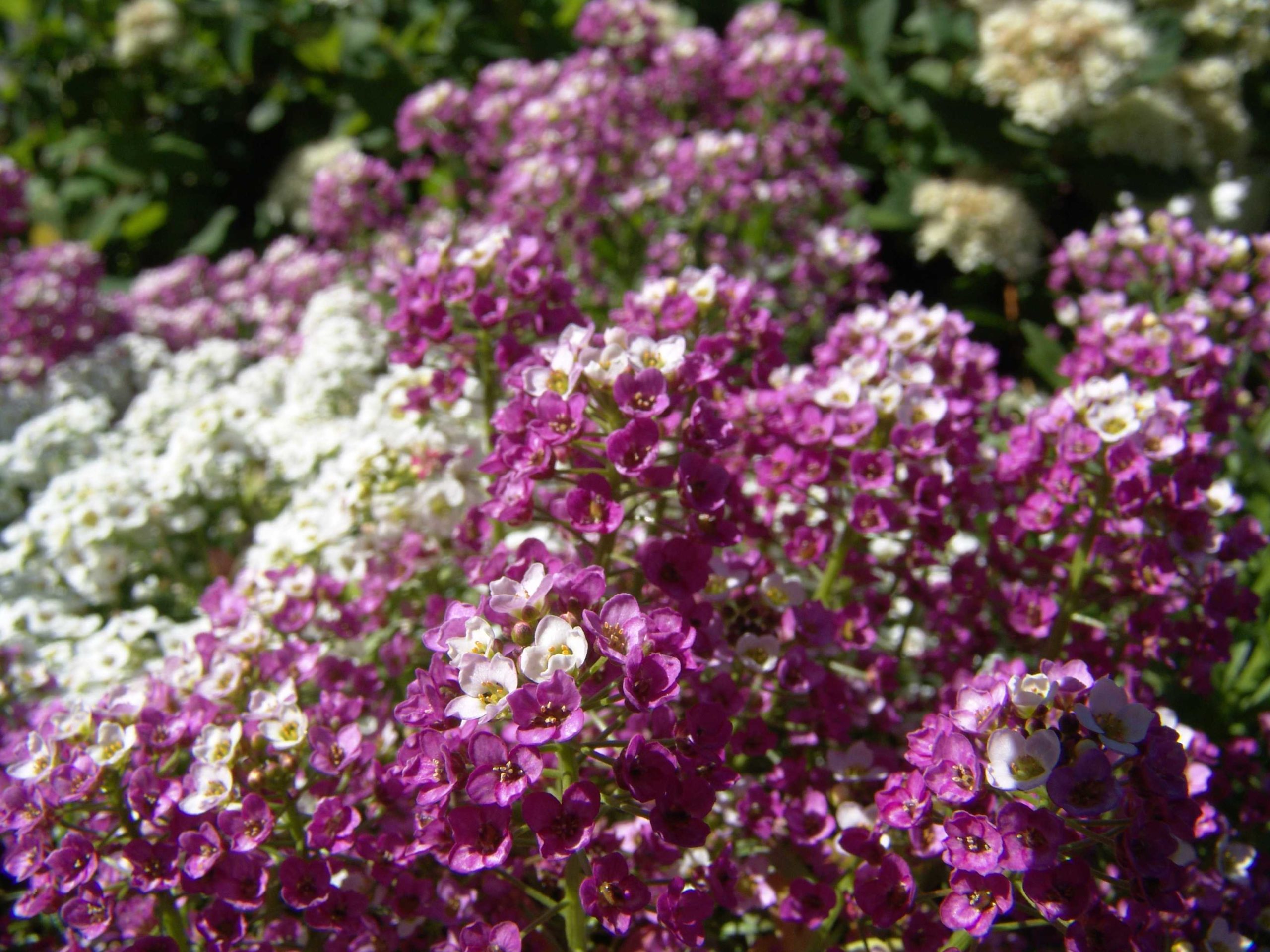
Alyssum, a genus in the Brassicaceae family (the mustard family), offers a vibrant carpet of tiny flowers to your garden. These charming flowering plants come in around 20 species, mostly annuals or short-lived perennials, with some biennials mixed in.
Native to Europe, Asia, and North Africa, with a concentration of diversity in the Mediterranean, Alyssum brings a touch of color throughout the season. The small, four-petaled flowers bloom in shades of white, pink, or purple, forming dense clusters on top of low-growing mounds of foliage.
Easy to grow from seed, Alyssum thrives in cool weather and prefers well-drained soil with plenty of sun. Many varieties will even bloom again in the fall after a summer siesta. A magnet for pollinators, especially butterflies and bees, Alyssum is a delightful addition to any garden.
Amaranthus
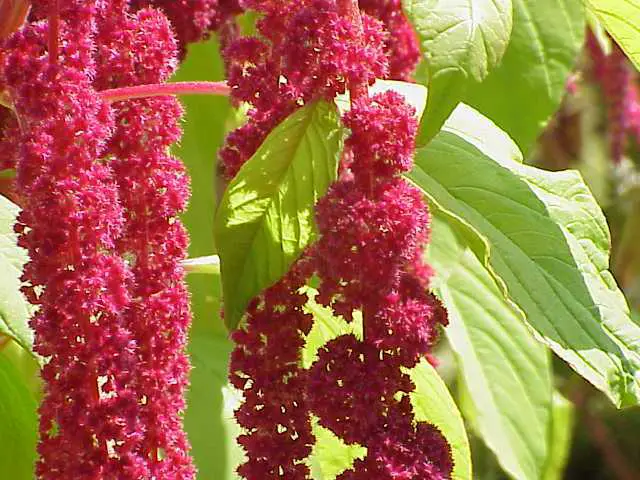
Amaranth, a family of nearly 300 flowering plants, belongs to the Amaranthaceae family and comes in a variety of shapes and sizes.
Beauty and sustenance in one, Amaranths have been cultivated for centuries. Some varieties boast stunning ornamental displays, like the popular “Prince’s Feather” with its long, red, purple, or gold plumes. Others offer edible seeds that are packed with protein and micronutrients.
Amaranths are low-maintenance, thrive from seed, and add a stunning addition to any garden by providing visual interest throughout the season.
Amaryllis
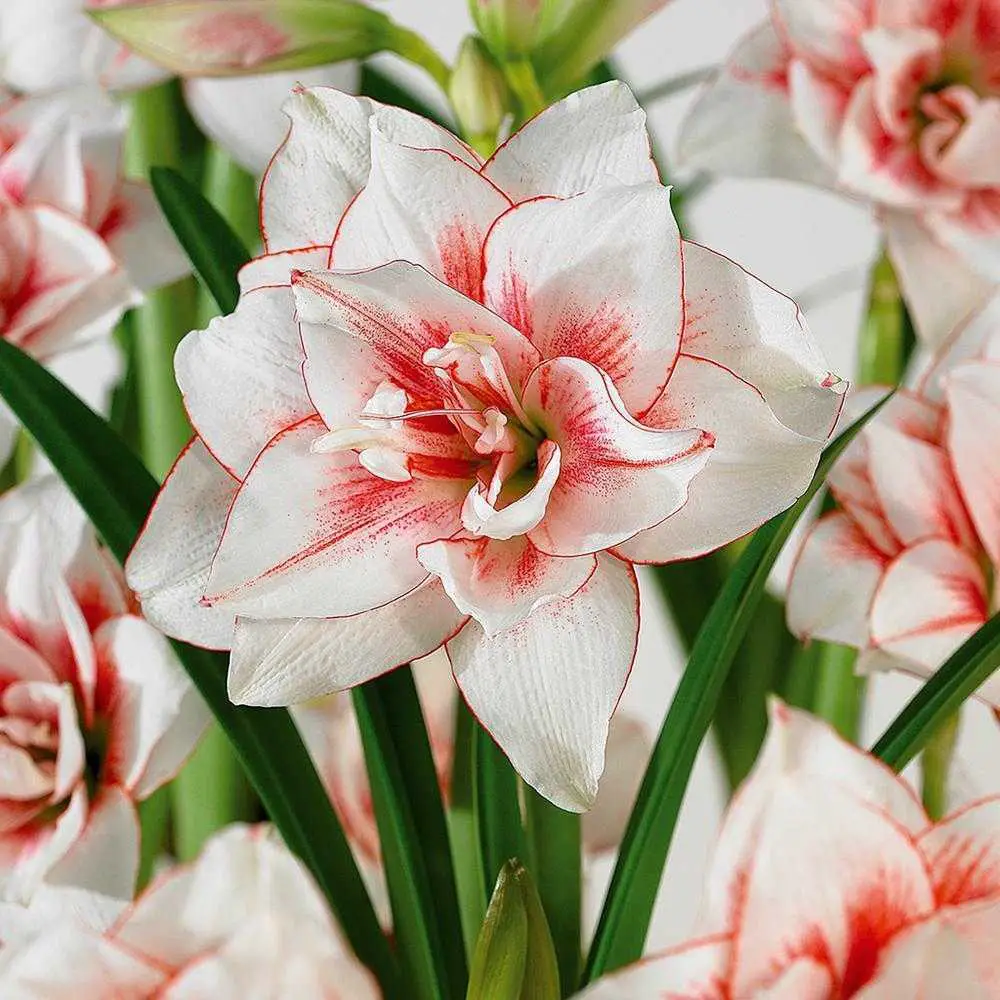
Amaryllis is a low-maintenance bulbous plant native to South America and the Caribbean. It isn’t a true lily, despite its impressive trumpet-shaped blooms, but it is a popular choice for indoor gardeners due to its vibrant winter blooms.
Offering a color palette from pure white to deep reds and purples, Amaryllis thrives in cool to moderate temperatures. Plant the bulb in fall or winter and enjoy its long-lasting blooms in late winter or early spring.
Easy to grow and care for, Amaryllis requires well-draining soil and prefers bright, indirect sunlight. With proper care, it can even rebloom year after year, making it a fantastic addition to any indoor space.
Anemone
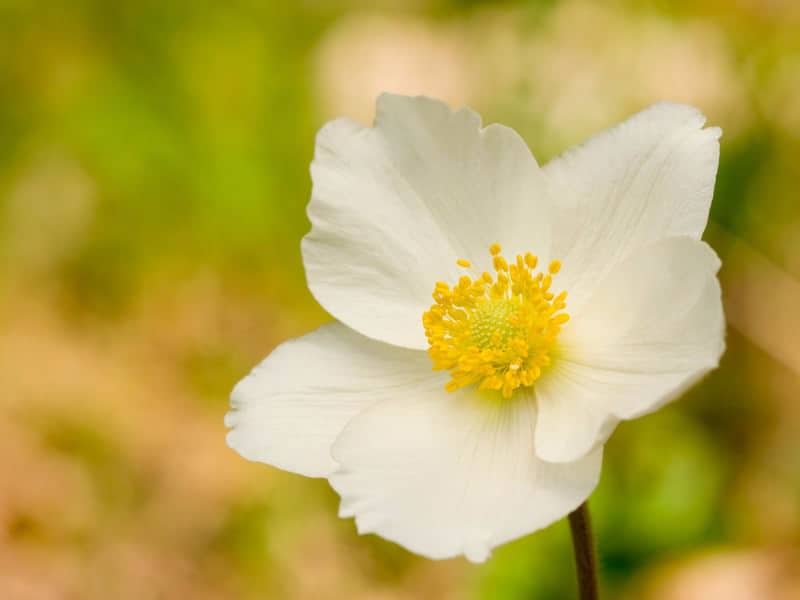
Anemones, also known as Windflowers, are charming perennials that are a favorite among beginner gardeners because they are easy to grow.
Native to woodlands and meadows across Europe, Asia, and North America, Anemones thrive in a variety of conditions, but they prefer well-drained soil and full sun to partial shade.
Anemones can grow to be one foot tall and they have large white flowers that resemble daffodils. Anemones typically bloom in early spring (February-April) and their leaves are cut into thin strips, which creates a neat contrast with the single flowers that pop up on tall, bare stems.
Propagating Anemones is a breeze – simply divide existing plants or try your hand at growing them from seed. While some varieties might surprise you with sporadic blooms throughout the year, most Anemones announce the arrival of spring with their vibrant display.
Angelonia
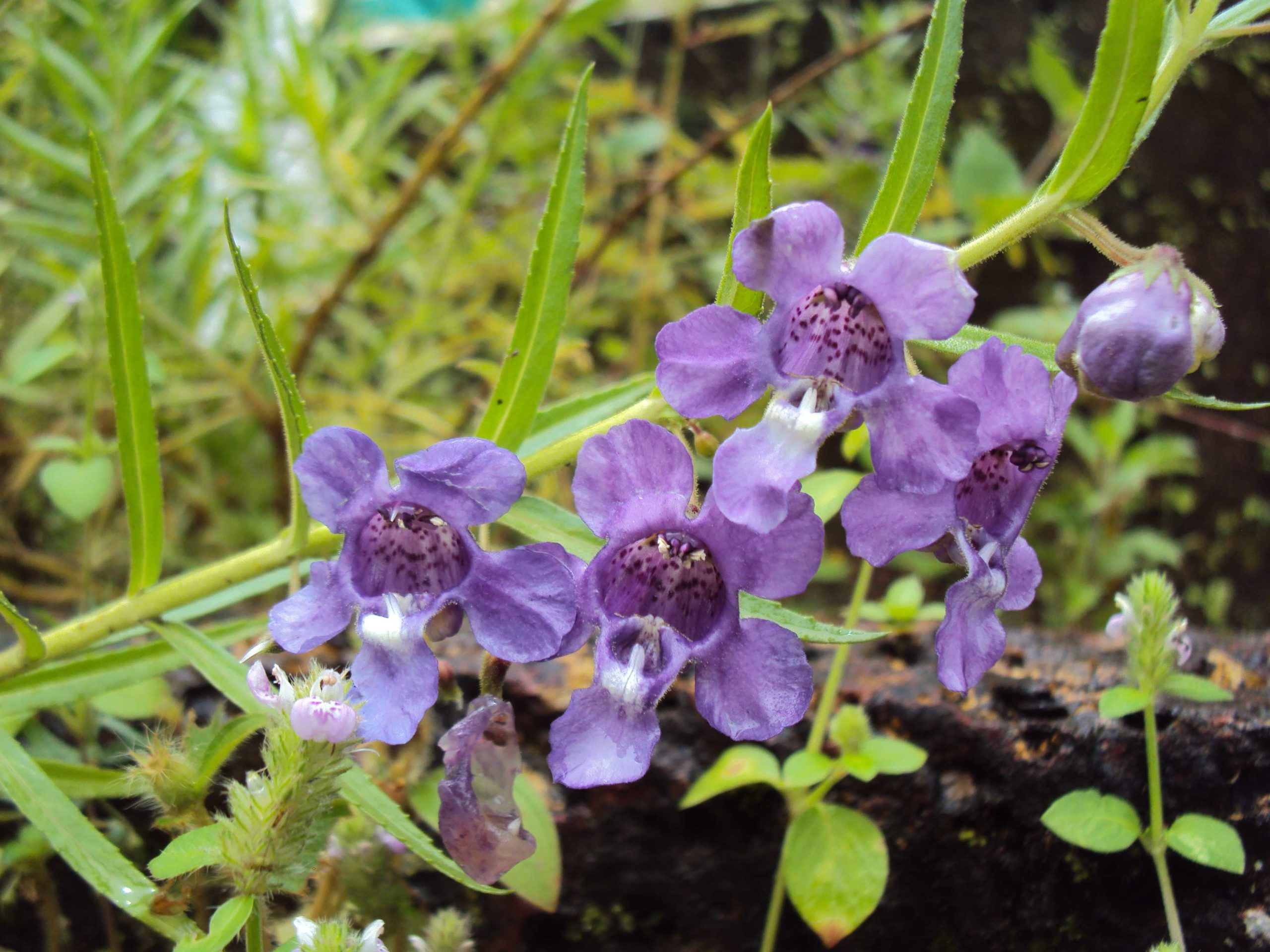
Angelonia, also called Summer Snapdragons, are summer annuals that grow to a height of 1-2 feet or more.
Angelonia is an excellent choice for flower beds, borders, and containers because of its beautiful blooms in shades of white, lavender, and pink; they also attract butterflies and hummingbirds with their sweet fragrance.
Thriving in well-drained soil and full sun, Angelonia is a low-maintenance flower that is drought tolerant once established.
Plant your Angelonia in mid-spring, or get a head start by starting them indoors anytime from late winter to early fall.
Anthurium
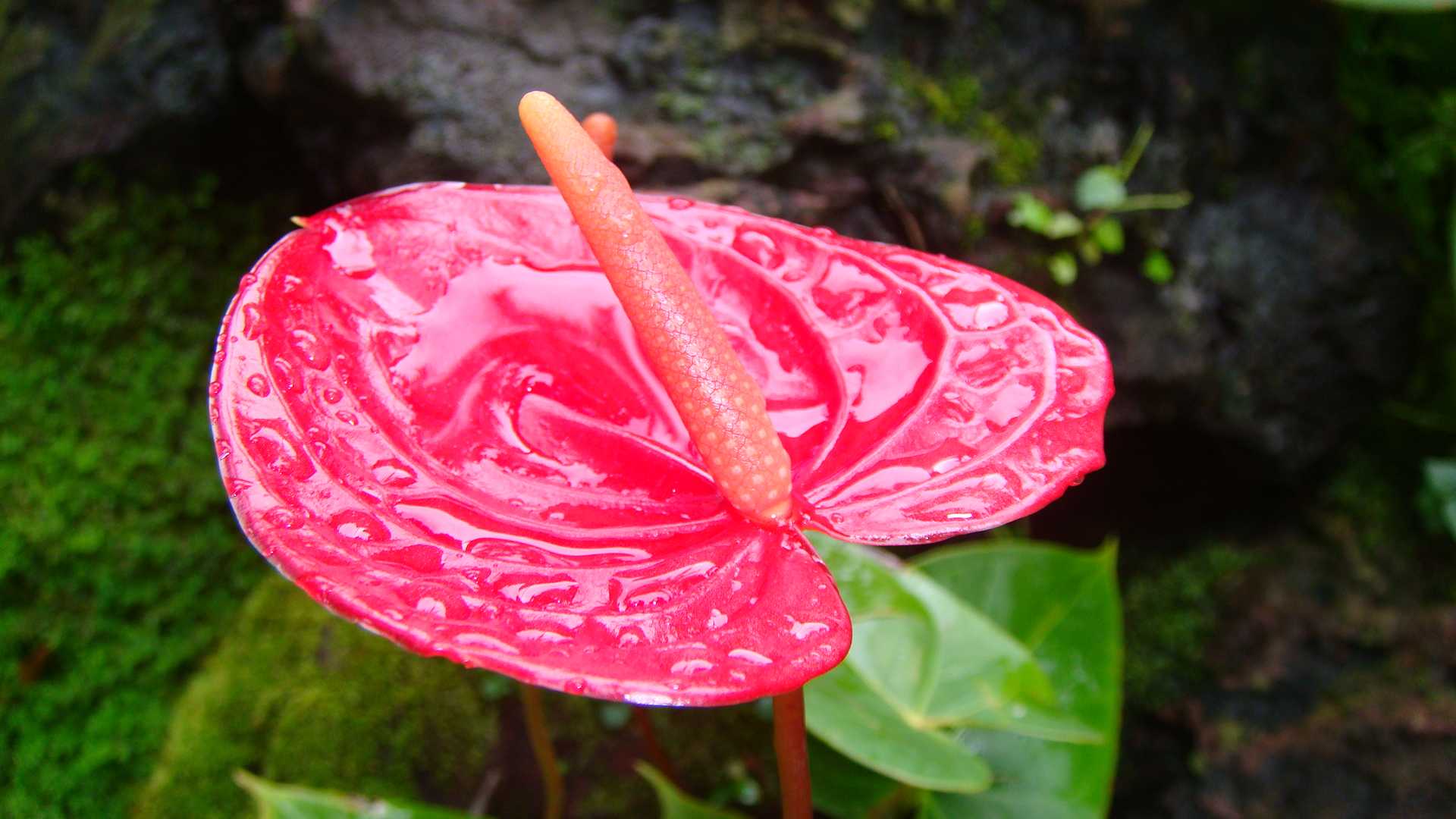
Anthurium, also called the Flamingo Flower, is a popular choice for beginner gardeners because it grows easily and does not need much attention (especially indoors).
Anthuriums thrive in bright, indirect sunlight and well-draining soil. While some varieties can tolerate outdoor conditions, Anthuriums generally prefer the warmth and humidity found indoors.
With their unique flower shape and a waxy, heart-shaped spathe and a tail-like spadix, Anthuriums come in many colors and sizes. The glossy green leaves often have prominent veins, adding to the plant’s visual interest.
Light can influence the color of your Anthurium’s leaves, but the overall flower shape remains distinct.
In addition to being easy-going, Anthuriums are known for purifying the air allowing for better air quality, which makes them a welcome addition to your home or office.
However, they are poisonous to pets if ingested so be careful where you place them!
Antirrhinum Majus
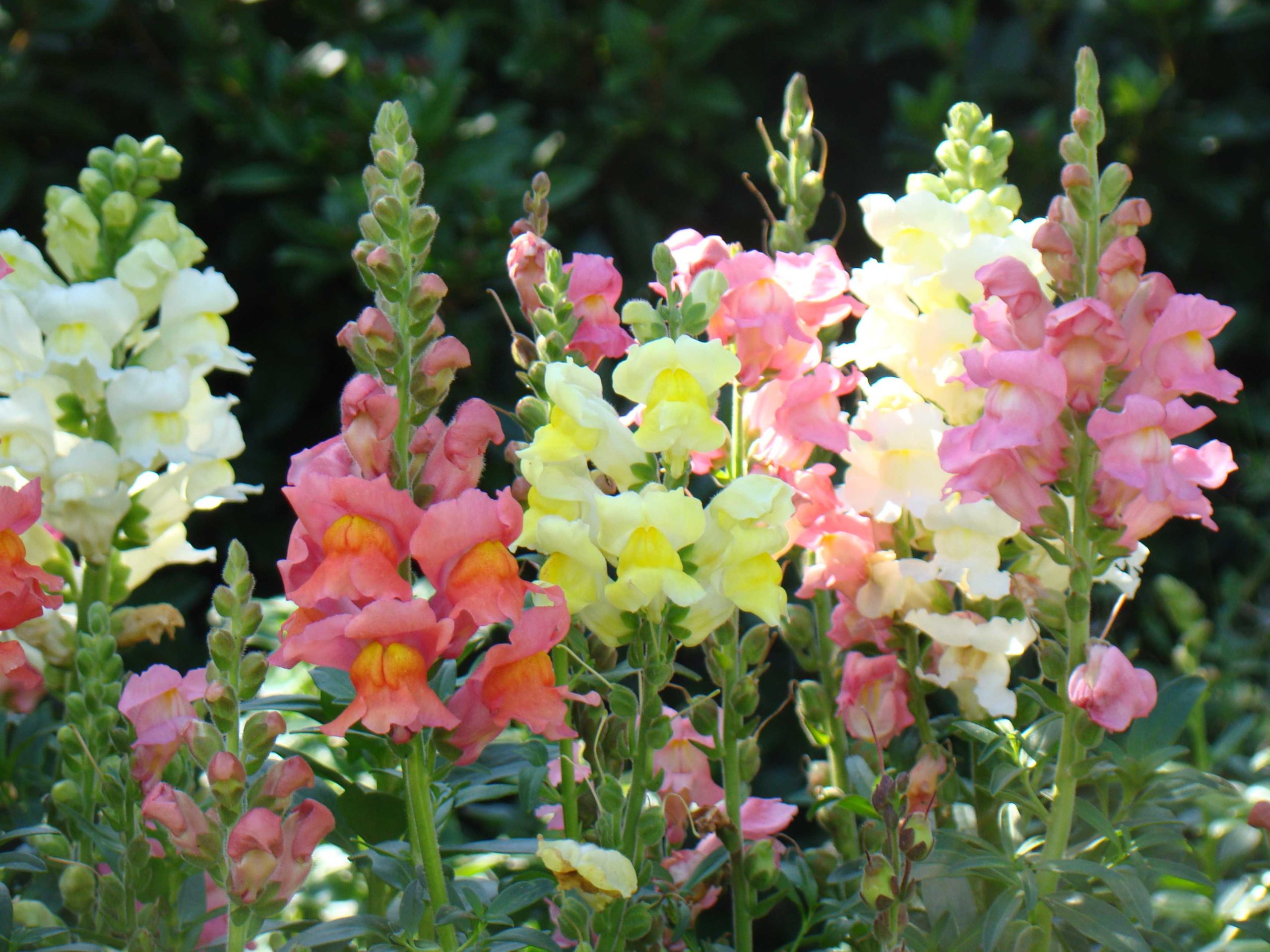
Antirrhinum majus, commonly known as the Snapdragon, has been cultivated for its ornamental flowers since the 1500s and has spread throughout Europe and America.
Standing tall at 1-2 feet, Snapdragons are a low-maintenance favorite with a long blooming season (June to October). They thrive in most climates and soil types, making them a versatile choice for beginner gardeners.
Additionally, they’re naturally resistant to mildew, a common garden foe. Available in many colors, Snapdragons add a pop of personality to borders, beds, and even containers.
Aquilegia
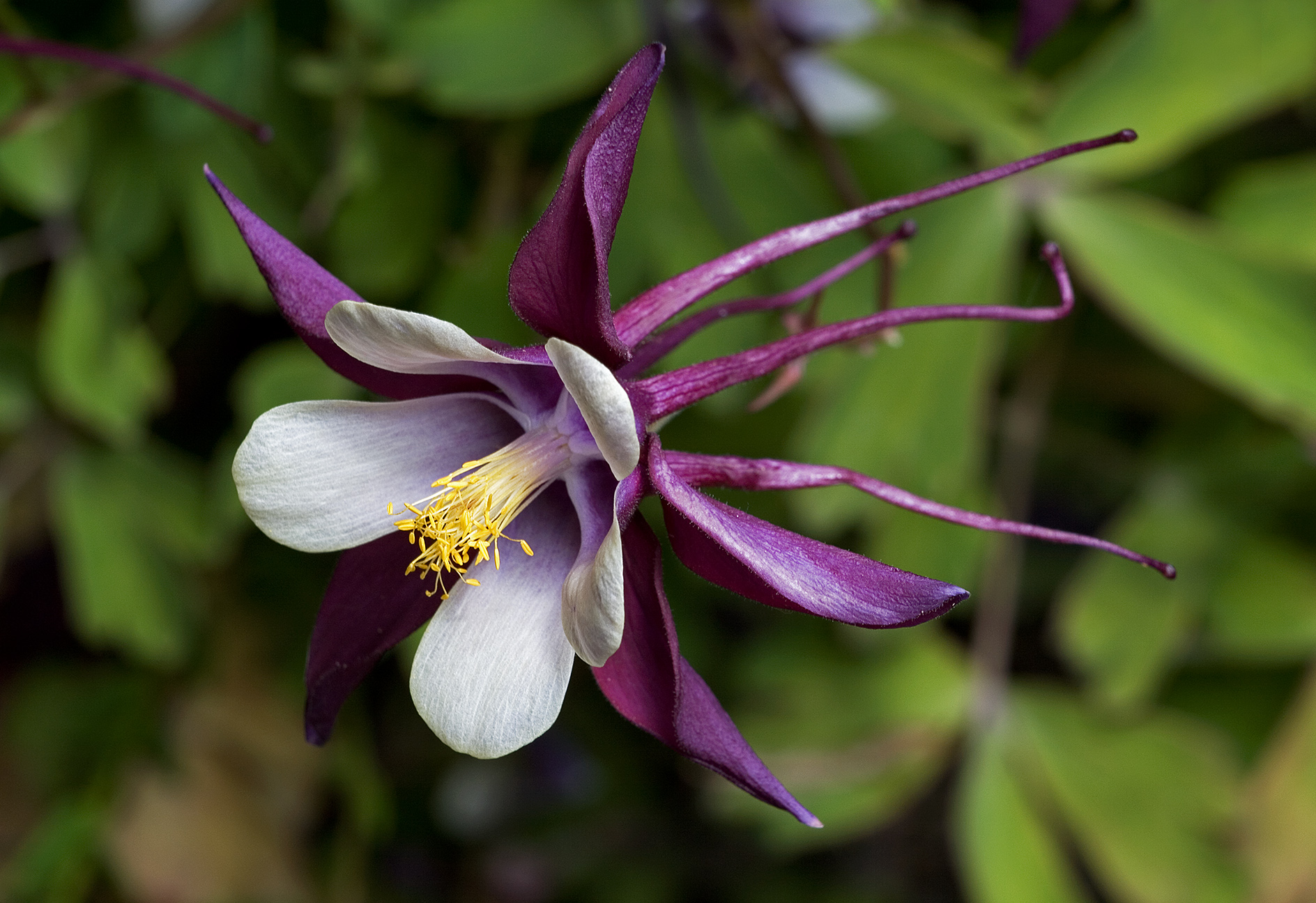
Aquilegia is a popular genus of flowering plants consisting of 65 species, most commonly known as Columbines or Granny’s Bonnet.
The name “Columbine” references the inverted flower’s five spurs that extend back into the flower corolla, which also resembles five clustered birds.
But some gardeners might be surprised to learn the genus name, Aquilegia, comes from the Latin word for “eagle.” This refers to the hooked shape of the flower’s petals, which some say resemble an eagle’s talons.
Columbines come in a delightful array of colors, from classic blues and purples to soft pinks and yellows. They typically bloom in spring, adding a touch of magic to your garden before the summer’s heat arrives.
Native to North America and Asia, with one species reaching Europe, Columbines (Aquilegia) are surprisingly easy to grow. They prefer well-drained soil and partial shade, making them a great choice for areas that don’t get full sun all day.
Asclepias Syriaca
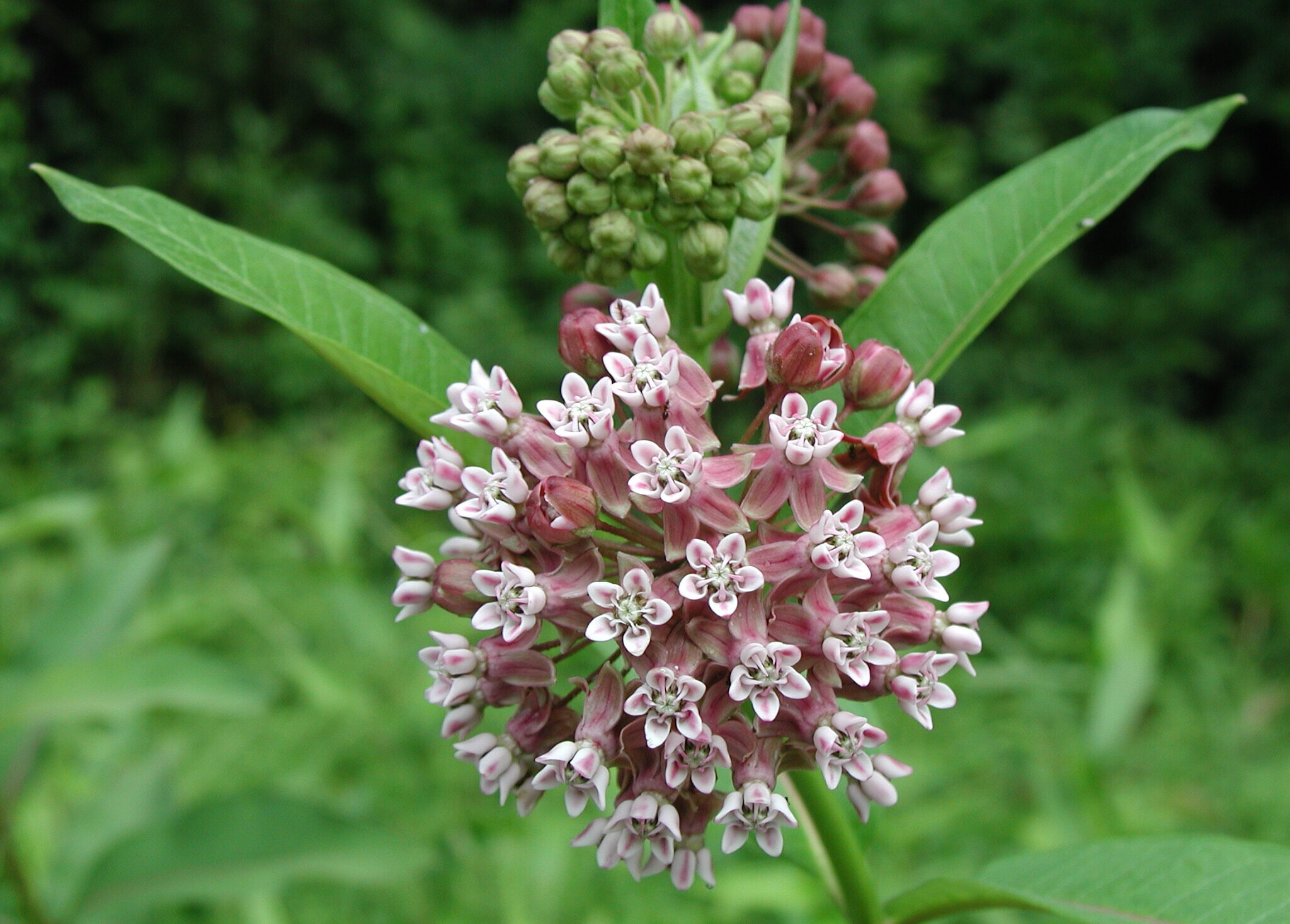
Asclepias syriaca is also known as common Milkweed. It is a favorite among butterflies because of its clusters of fragrant pink or purple flowers that bloom throughout summer.
Native to North America, Milkweed (Asclepias syriaca) is a perennial plant, which means it will return year after year.
It has tall stems with large, soft leaves and a milky sap inside, making it a great choice for gardeners who want to help butterfly populations as it is a vital food source for their caterpillars.
Aster

Asters are perennials native to Eurasia and North America, but they are found worldwide in gardens, meadows, and alongside roads.
Asters have star-shaped flowers that come in a number of colors from vibrant purples and pinks to soft blues and whites.
Aster is the most widely used common name for these beautiful flowers, although there are many different species and cultivars within the Aster genus.
A favorite among beginner gardeners because they’re low-maintenance and easy to grow, Asters thrive in well-drained soil and prefer bright, indirect sunlight.
With a long blooming season from late summer to fall, they’re a welcome sight as other summer flowers fade. Asters come in various heights, making them perfect for borders, beds, or even container gardening.
Asters are also known for attracting pollinators, like butterflies and bees, adding to their ecological benefits.
Primarily valued as ornamental plants, Asters also have some historical medicinal uses, but these should only be attempted under the guidance of a qualified herbalist.
Astilbe
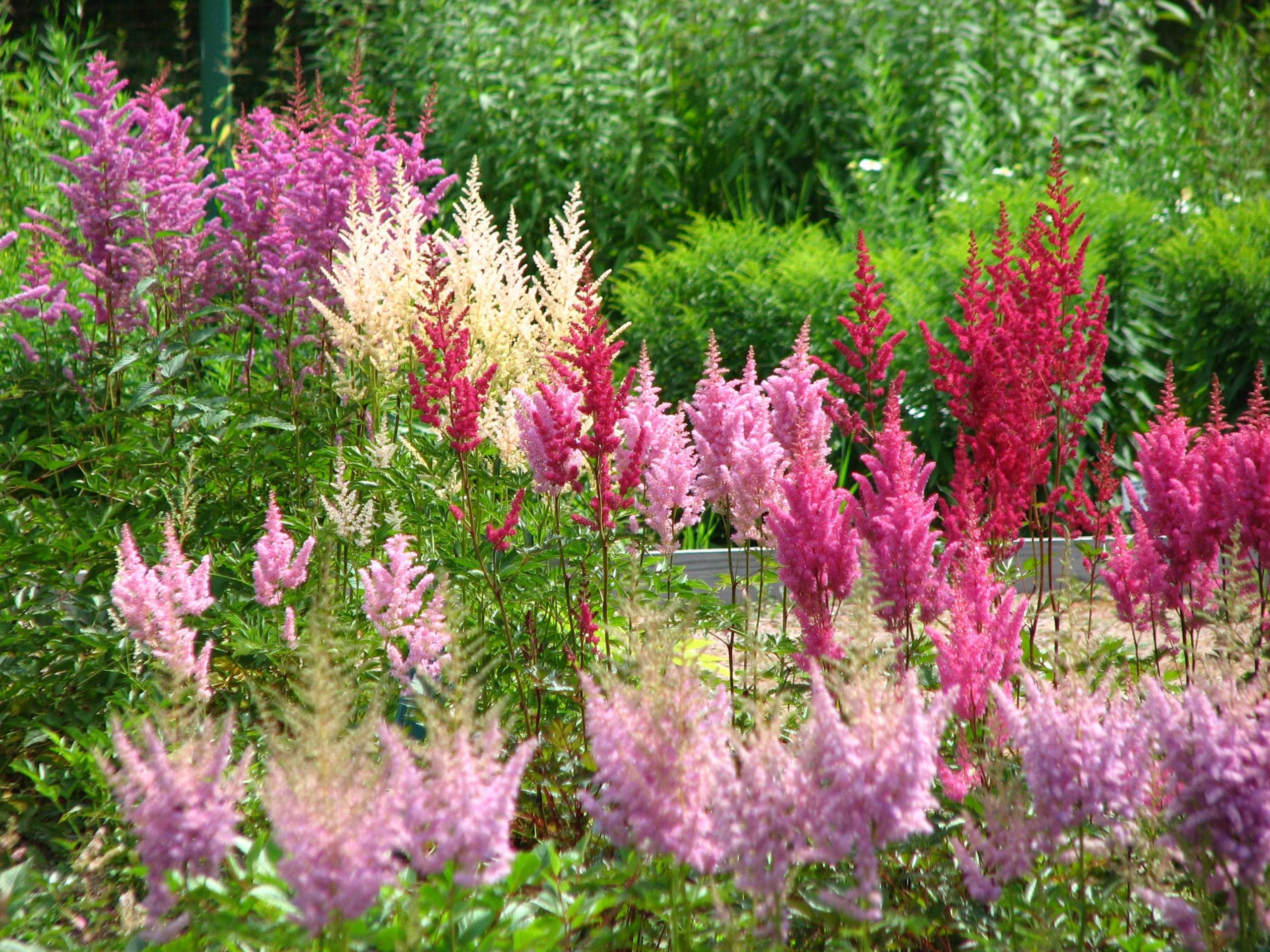
Astilbe is a perennial easily identified by its feathery plumes of flowers in shades of pink, lavender, and white. They come in various heights, from knee-high to taller than a garden gnome, and bloom from late spring to early summer, adding a pop of color just as other spring flowers begin to fade.
Nicknamed “false spirea” because it resembles another plant, Astilbe is a favorite for adding a delicate touch to borders and shady areas. They thrive in moist, well-drained soil and they prefer partial shade or dappled sunlight.
Astilbes are also deer-resistant, which is a plus for gardeners who have to contend with browsing wildlife. Their beautiful blooms can be enjoyed in your garden or as cut flowers inside your home!
Astrantia
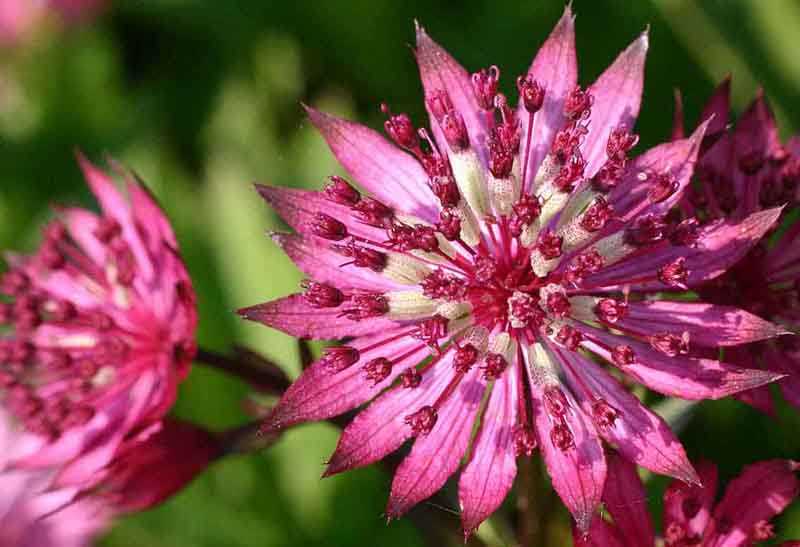
Astrantia, commonly known as Masterwort, usually has pincushion-like blooms in the summer with various colors in shades of pink, burgundy, and white.
Astrantia’s flower heads are truly interesting! A mature blossom in late spring has brown bracts in the base of the flower head which turn green soon after opening.
Perfect for beginner gardeners, Astrantia thrives in moist, well-drained soil and prefers partial shade. They’re relatively low-maintenance and will reward you with blooms from late spring to summer. The Astrantia plant itself is low-growing and tends to spread gently over time thanks to underground stems called rhizomes.
Adaptable and attractive to pollinators, Astrantia can tolerate drier soils if there’s enough moisture during its growing season. They also attract butterflies and other pollinators, adding to their ecological benefits. A good mulch layer after the first autumn rains helps retain moisture during winter months. They come in various heights, making them a versatile choice for different areas of your garden.
Aubreita Deltoidea

Aubreita Deltoidea, also called “Purple Rock Cress”, are perennials are native to southeastern Europe and western Asia.
These charming perennials are commonly grown in rock gardens and they form mats of green spoon-shaped leaves topped with a profusion of small, vibrant flowers.
Perfect for beginner gardeners, Aubrieta thrives in well-drained soil and prefers full sun to partial shade. They’re low-maintenance and drought-tolerant once established, making them a great choice for hot, dry areas.
Blooming in mid-to-late spring, Aubrieta deltoidea provides a welcome splash of color as other spring flowers begin to fade. They typically stay low to the ground, creating a beautiful carpet of blooms.
Aubrieta deltoidea attracts pollinators like bees and butterflies, adding to their ecological benefits and they’re even deer-resistant!
